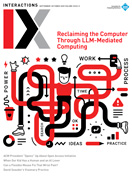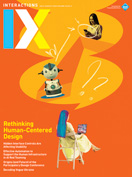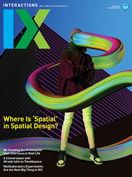Authors:
Niels van Berkel, Kasper Hornbæk
The field of human-computer interaction covers a broad set of methods, viewpoints, and application areas. While the real-world impact of our research is typically impossible to predict, HCI researchers generally seek for their work to have implications that go beyond an individual paper. For example, a study on the use of datalogging tools by hospital staff can provide design implications for patient information systems. A paper on privacy on the Web might provide policy implications on the regulation of tracking technologies. Finally, an analysis of methodological flaws in published papers can provide new analysis guidelines with implications for applying…
You must be a member of SIGCHI, a subscriber to ACM's Digital Library, or an interactions subscriber to read the full text of this article.
GET ACCESS
Join ACM SIGCHIIn addition to all of the professional benefits of being a SIGCHI member, members get full access to interactions online content and receive the print version of the magazine bimonthly.
Subscribe to the ACM Digital Library
Get access to all interactions content online and the entire archive of ACM publications dating back to 1954. (Please check with your institution to see if it already has a subscription.)
Subscribe to interactions
Get full access to interactions online content and receive the print version of the magazine bimonthly.






